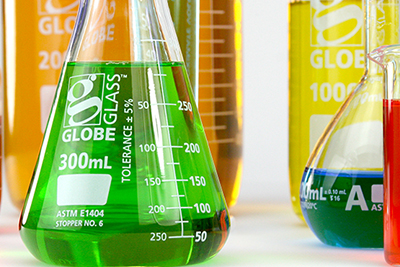

Cookies make our site work properly and securely. By using this website, you agree to our policy and will get the best user experience with brand enriched content & relevant products and services.


As a lab professional or dealer, you may have come across the acronyms ISO and ASTM when working with laboratory supplies such as glassware. However, you may not know precisely what these classifications mean and what the difference is between ISO and ASTM standards.
At Globe Scientific, we are devoted to advancing high-quality scientific research, and this means we take manufacturing standards into the utmost consideration when sourcing our glassware. Here’s what you need to know about the difference between ISO and ASTM standards and why ASTM standards are preferable for laboratory applications.
The International Organization for Standardization (ISO) sets forth methods for the “testing, calibration and use of volumetric instruments made from glass” so that laboratory professionals can achieve a high level of accuracy while carrying out their processes. A standard piece of laboratory glassware that has been given an ISO certification has met these standard ISO requirements. ISO classifications tend to be more common in Europe and Asia.
Similar to the ISO, the American Society for Testing and Materials (ASTM) also sets forth methods of testing and calibration of volumetric glassware so that laboratory professionals can be assured of a certain quality and tolerance range when using a product. ASTM standards are more common in the United States, and regulators such as the U.S. Food and Drug Administration (FDA) adhere to ASTM guidelines when it comes to activities within the pharmaceutical industry.
While ISO and ASTM standards both take into consideration similar qualities when calibrating glassware, they vary as to the global regions in which they are adopted. Additionally, ASTM classifications differentiate volumetric glassware performance even further, dividing products such as volumetric flasks, graduated cylinders, and beakers into two distinct categories: Class A and Class B.
Products that are given Class A status have met rigorous ASTM standards for a specific range of volumetric tolerance, and many include a certification that indicates their specific testing and alignment with these standards and a serial number for easier manufacturing traceability. Products that are given a Class B status have also met rigorous standardization requirements. However, their tolerance is double that of Class A glassware.
Because of the careful attention to precision and the guarantee of high accuracy inherent in ASTM standardization (particularly Class A), ASTM-certified glassware is generally regarded as preferable for laboratory applications. Compared to the ISO standards set forth for laboratory glassware, ASTM standards have a narrower range of tolerability and, therefore, the highest accuracy available in a laboratory setting.
Designed to meet the needs of the most demanding laboratory professionals, Globe GlassTM laboratory glassware sets the standard for performance and packaging in the glassware marketplace. Top quality borosilicate glass delivers outstanding strength, durability, and chemical resistance. Superior GlassGuardTM packaging has been engineered to ensure that Globe GlassTM products arrive at their destination intact and ready for use each and every time. Globe GlassTM beakers, Erlenmeyer flasks, volumetric flasks, graduated cylinders, and media bottles are offered in sizes most used in laboratories everywhere. Check out our laboratory glassware line, today!